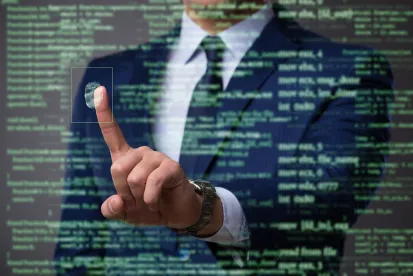Last week, McDonald’s moved to dismiss litigation brought against it under the Illinois Biometric Information Privacy Act (“BIPA”) concerning allegations that the fast food chain utilized drive-thru voice assistants in Illinois which captured and stored customers’ biometric voiceprint identifiers without their written consent. Carpenter v. McDonald’s Corporation, Case No. 1:21-cv-02906 (N.D. Ill.).
The crux of Plaintiff’s Complaint is that “McDonald’s AI voice assistant’s voice recognition technology collects customers’ voiceprint biometrics in order to be able to correctly interpret customer orders and to identify repeat customers to provide a tailored experience.” However, “McDonald’s has failed to comply with BIPA’s regulations and does not notify its customers that when they interact with McDonald’s AI voice assistant their voiceprint biometric information is used and collected, nor does McDonald’s obtain their consent to do so.” Compl. ¶¶ 8-9.
As argued in McDonald’s Motion to Dismiss, the allegations in the Complaint, even if taken as true at the pleadings stage, “make clear” that “McDonald’s drivethru technology does not use biometric identifiers or biometric information.” McDonald’s Motion also argues that Plaintiff’s allegations are contradicted by the patent governing the technology at issue, which “belies any allegations that the technology somehow identifies the individual speaking to the conversational agent or extracts any biometric data.”
First, some background. In the Carpenter case it is alleged that McDonald’s allegedly acquired Apprente, a “company that specialized” in “machine learning and intelligent AI” applications, “to implement an AI voice assistant” in restaurant drive-thrus, and that McDonald’s collected his biometric information in the form of his “voiceprint” when he interacted with that technology.
However, contrary to the allegations in the Complaint, McDonald’s argues that the patent involving the technology at issue “does not describe technology that uses biometric information.” Instead, that patent describes “a software program that interprets and responds to statements made by users in ordinary natural language.” To put it otherwise: the technology “takes the customer’s utterances and creates the information necessary to initiate an order in accordance with the speaker’s intent” While it can identify “speaker characteristics such as accents, speech patterns, gender, age, etc,” according to McDonald’s it does not describe “extract[ing] the customer’s voiceprint biometrics,” as expressly alleged in the Complaint.
How does McDonald’s get to rely on the language of a patent to resolve a case that remains at initial stage of litigation? Good question. In federal court, there is something called the incorporation by reference doctrine that has been adopted by across jurisdictions. At bottom, the doctrine stands for the proposition that a copy of a written instrument that is an exhibit to a pleading is a part of the pleading for all purposes. As such, according to McDonald’s, because the patent at issue was attached by Plaintiff to the Complaint, it become part of the case pleadings and may be considered by the court for purposes of whether Plaintiff alleges a cognizable BIPA claim.
Which brings us to Plaintiff’s BIPA claim itself. Which turns on the meaning of the term “voiceprint,” which is undefined in the statute.
Recall that BIPA regulates the collection, use, and storage of “biometric identifiers” and “biometric information.” “Biometric identifier” in BIPA is defined as “a retina or iris scan, fingerprint, voiceprint, or scan of hand or face geometry.” 740 ILCS 14/10. And in the statute “‘[b]iometric information’ means any information, regardless of how it is captured, converted, stored, or shared, based on an individual’s biometric identifier used to identify an individual.” 740 ILCS 14/10 (emphasis added).
Because BIPA does not define the meaning of the term “voiceprint,” courts (and the Illinois Office of the Attorney General) have repeated found that based upon the dictionary definition of the term, “a “voiceprint” under BIPA is not the same as a voice recording.” McDonald’s Br. at 5 (emphasis supplied).
This is significant here, McDonald’s argues, because the patent describing the tech involved “makes clear that the allegedly “identifying information” described in the Complaint—in addition to not being “identifying” or biometric—is actually “training data” and is used for training the conversational agent to recognize and respond to speech, not to identify individual speakers.” Id. at 7 (emphasis supplied).
Will the court agree with McDonald’s and dismiss the case? It remains to be seen, but one thing is certain. CPW will be there to keep you in the loop. Stay tuned.




 />i
/>i

